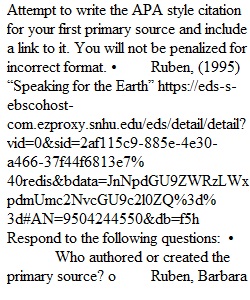


Q Overview History consists of humans who each have a unique combination of beliefs, assumptions, values, and biases. The stories we tell and the knowledge we create about the past cannot be separated from their authors. Thus, we should never accept a source at face value. But instead, we must be critical consumers of information. In this activity, you will analyze your primary sources for narratives and consider if any bias is represented. Prompt Use the provided Module Four Activity Template: Bias in Primary Sources Word Document to complete this activity. First, you will locate an additional primary source related to your historical event. Next, you will answer questions about your event and the primary source you identified in a previous module. You will then consider whether there is evidence of bias in these sources. Specifically, you must address the following rubric criteria: • Conduct source analysis on two primary sources relevant to your historical event. o You will respond to specific questions about each source in the activity template. • Analyze the primary sources relevant to your historical event for the presence of bias. o What clues are present in your two sources that may indicate bias? Provide evidence of these clues from your sources. If you do not think there is bias, provide evidence to support your claim. • Compare how your historical event is represented in your primary sources. o Do the two sources tell the same story, or are contrasting perspectives represented? Provide evidence from your sources. Guidelines for Submission Submit the Module Four Activity Template: Bias in Primary Sources. Sources should be cited according to APA style. Consult the Shapiro Library APA Style Guide for more information on citations.
View Related Questions